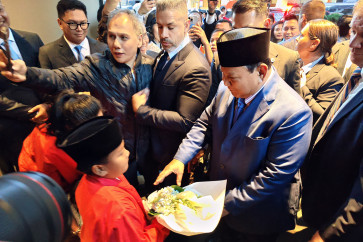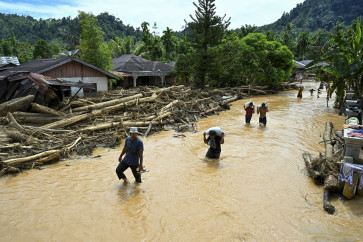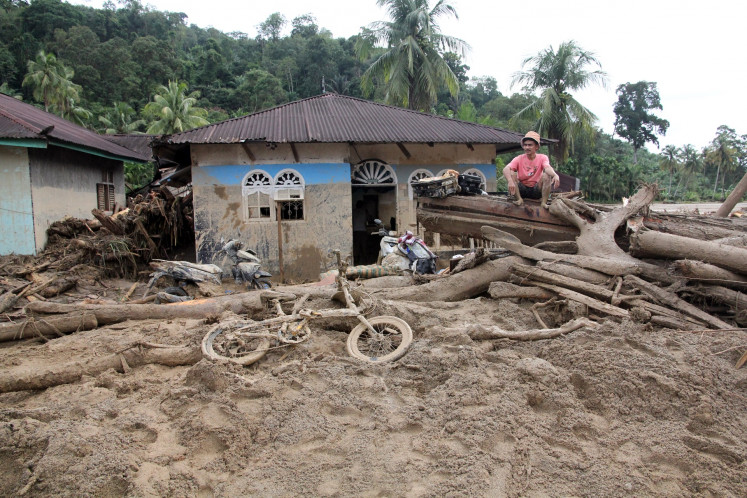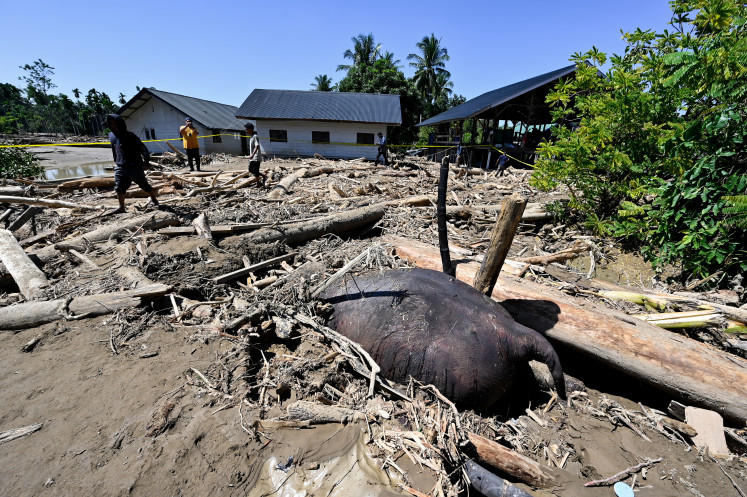Popular Reads
Top Results
Can't find what you're looking for?
View all search resultsPopular Reads
Top Results
Can't find what you're looking for?
View all search resultsCounterfeit drugs ‘a serious threat’
Cheap drugs: An attendant at a drugstore in Pramuka Market in East Jakarta arranges boxes of medicines on the store’s shelves
Change text size
Gift Premium Articles
to Anyone
C
span class="caption" style="width: 398px;">Cheap drugs: An attendant at a drugstore in Pramuka Market in East Jakarta arranges boxes of medicines on the store’s shelves. Pramuka Market is known in the city as the hub for counterfeit drugs. JP/NurhayatiAn expert has warned that rampant drug counterfeiting may not only lead to financial losses to producers but also give rise to drug-resistant diseases.
Widyaretna Buenastuti, chairwoman of the Indonesian Anti-Counterfeiting Society (MIAP), said on Tuesday that consumer education remains the best way to combat drug counterfeiting, to ensure safe drugs were being distributed.
“We won’t be able to distinguish whether a product is counterfeit or not. Counterfeiters are really good at coming up with convincing looks for their products,” Widyaretna said in a seminar organized by the US Embassy in Jakarta.
She suggested that people only buy medicine from reputable pharmacies or licensed drugstores.
Counterfeit drugs have caused serious losses to the government, Widyaretna said, with the amount of potential tax revenue lost reaching Rp 43.2 trillion (US$4.76 billion) between 2005 and 2010.
Widyaretna also said counterfeit drugs could be harmful to patients.
“If you compare it with other sectors, the economic losses from drug counterfeiting makes up only 3.5 percent of the total figure in the past five years, which is not too high. The problem is that counterfeit drugs can be dangerous and can even kill you, no matter how small the percentage is,” she said.
Meanwhile. US Ambassador to Indonesia Scot Marciel said that more than $75 billion worth of fake drugs were sold globally in 2010.
He said the latest estimates suggested over 30 percent of medicine sold in Southeast Asia was counterfeit, resulting in serious problems.
“The US and Indonesian companies that are making real medicines lose out to people who are making fake or counterfeit medicines,” Marciel said.
He said counterfeit drugs could also have severe health impacts. “If they are taking medicines for their illnesses, diseases, and those medicines are fake or not the proper medicines, then there are huge chances that they won’t be cured.”
For certain diseases, taking improper medication can contribute to the development of strains of the diseases resistant to regular drugs.
In the US, the problem has also affected companies producing drugs for serious illness. Recently, authorities found fake Avastin, a cancer drug produced by Roche, in the market, as well as fake antibiotics, HIV and tuberculosis drugs.
But combating counterfeit drugs is not an easy undertaking.
Peter N. Fowler, the US regional intellectual property attaché, said most countries, including Indonesia, had regulations against counterfeiting that impose a range of penalties.
But in reality, he said, many law-enforcement agencies did not take counterfeiting seriously.
“Some still see this naively as consumer choice, saying that ‘Well, you can pay less for this and you take the risk. But it’s not really a threat to society, to the public, in the same way other crimes are’,” Fowler said.
Fowler said that the judiciary has also been lax against counterfeiters.
“They may get three to six months in jail, they may get fine that they can easily pay because again, the profit from the activity as a criminal business enterprise is huge,” said Fowler.
He said some criminals would not be bothered by a six-month jail sentence and would return to counterfeiting upon release.
Fowler said counterfeiting drugs is a profitable business, with the profit margin for Viagra could be 2,800 percent of costs, compared to counterfeit tobacco (800 percent), heroin (1,200 percent) and cocaine (1,400 percent).
“In Asia, the risk of smuggling narcotics is the death penalty. If you’re just involved in counterfeit medicine, it’s sometimes seen only as trademark violation — although this is a very significant public-health threat,” Fowler said.










